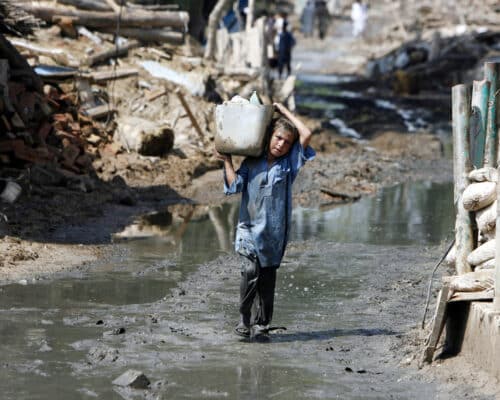COP27 Egypt and the Road to Net-Zero
20 October 2022 – by Viktor Tachev Comments (0)
COP27 promises to focus on implementation measures to ease the road to reach net zero emissions. At the November conference, world leaders and global efforts should focus on climate change mitigation and adaptation. The goal is to help developing countries face the harshest consequences of rising temperatures – something that they are already struggling to do.
Crunching the Numbers: What Climate Change Adaptation and Mitigation Will Cost Developing Countries
COP26 left a sour taste in the mouth of the most vulnerable countries. At the conference last year, they had to hear leaders again confessing with “deep regret” that the promised climate financing wasn’t provided. In COP26’s aftermath, many developing countries, especially in Asia, were struck by devastating heatwaves, wildfires, droughts and floods – another reminder of how crucial the missing funds are.
This has led to calls from leaders of developing countries for the undelivered USD 100 billion in annual financial aid to be re-quantified and scaled up to match the evolving adaptation and mitigation needs of developing economies.
Developing Countries Need USD 300 Billion to face Climate Crisis
Until recently, the high estimates for annual adaptation finance needs for developing countries pointed to USD 300 billion by 2050.
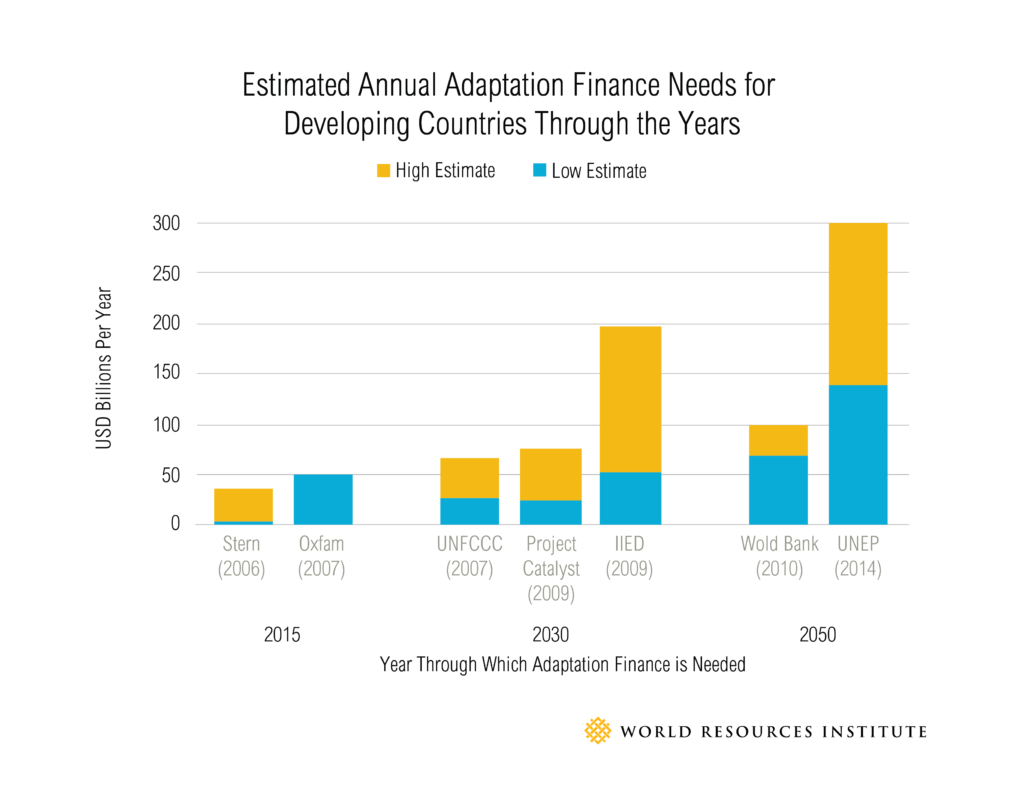
The UNEP’s 2021 Gap Report found those numbers insufficient. The analysis estimated developing countries’ annual climate adaptation finance needs at up to USD 300 billion by 2030 and USD 500 billion by 2050. However, according to the IPCC, the actual funds needed by the most vulnerable countries are much higher.
The African Group of Negotiators recently called for leaders to align their financing targets at COP27 with higher estimates.
UN Climate Change Conference 2022 – COP27 will be held in Sharm El Sheikh, Egypt, from 6 to 18 November. It is the 27th session of the Conference of the Parties of the UNFCCC. The Government of the Arab Republic of Egypt is the host of this climate change conference, and greenhouse gas emissions reductions, climate action, climate finance, fossil fuel emissions, fossil fuel subsidies and climate solutions are on the COP27 agenda.
Climate Finance Challenges For Developing Countries
The issue with climate financing isn’t just the numbers. The problem is more complex, and mitigation and adaptation efforts will remain insufficient without addressing the accompanying challenges.
More Ambitious Financing Commitments
Mitigation and adaptation financing commitments should be aligned with the latest estimates from scientists and working groups like the IPCC. The current commitments are far below the real needs of the most vulnerable communities of developing countries.
Furthermore, accountability is lacking, and failure to provide the promised funds leads to no consequences.
Inaccurate Estimates
There is a glaring discrepancy between the climate financing reporting by donors and recipients. Experts consider the agreement on a clear framework and definition of adaptation finance as a crucial step to breaking the deadlock. Third parties must oversee the process to ensure maximum transparency.
To provide a more precise estimate of the adaptation finance needs, the WRI suggests that countries prepare their National Adaptation Plans and Adaptation Communications. Developed countries need to deliver grant-based funding to finance adaptation plans. Useful tools in this mission are the Adaptation Fund and other entities of the Financial Mechanism established under the UNFCCC.
Reshaping the Financing Landscape and Involving the Private Sector
An overwhelming majority of global climate finance has so far been targeted at climate change mitigation. Current public and private adaptation flows are much smaller than needed. Currently, only 4% to 8% of climate finance is actually going to adaptation efforts.
In fact, there have been calls for all climate finance to be sent towards adaptation to help catch up. While the Glasgow pledge to double adaptation funds is a step in the right direction, it still falls way behind the actual needs.
Furthermore, around 2% of adaptation finance currently comes from the private sector. The main reason is that adaptation measures don’t generate returns similar to mitigation projects (e.g. building solar or wind power).
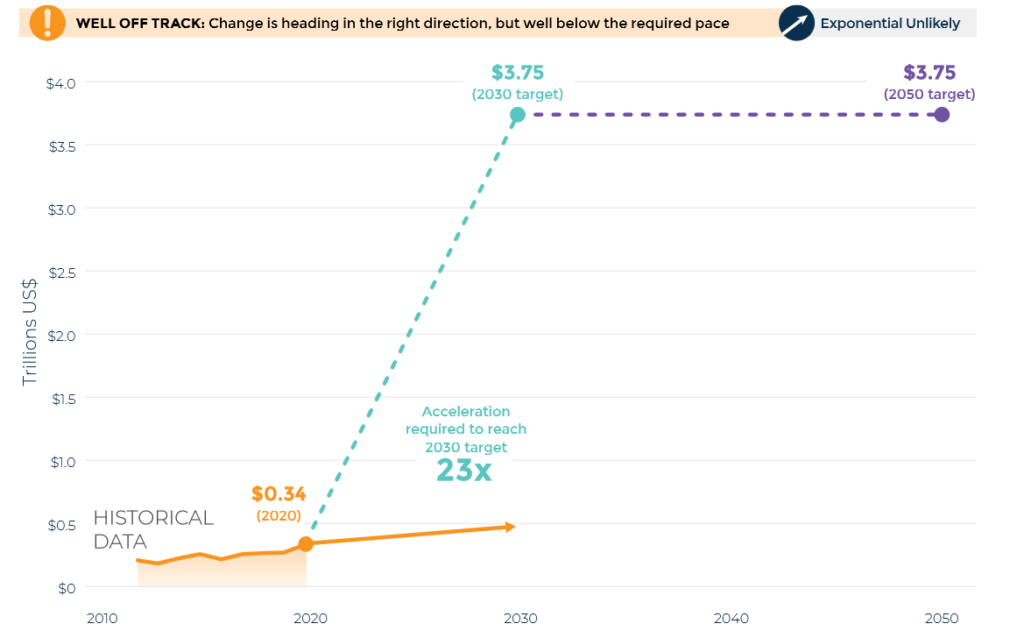
COP27 and the Road to Net-Zero For Vulnerable Countries: The Needed Solutions
Leaders must stress the importance of accountability by implementing the Paris Agreement rule book. Many major emitters’ 2030 targets are weak and lack credible net-zero pathways. Countries should revisit and strengthen their NDCs as per the Glasgow Climate Pact. And they should use COP27 Egypt as a stage to present more ambitious long-term strategies and targets.
Developed nations and the international community should lead vulnerable countries on the road to net-zero by demonstrating ambition and tangible results in accelerating the energy transition, reducing greenhouse emissions, phasing fossil fuels out and going beyond their existing-but-not-fulfilled financial commitments. The focus should be on setting clear finance targets for developed countries’ mitigation, adaptation, loss, and damage. Leaders should also agree on credible and auditable financing mechanisms that can make those targets possible in the shortest time. Furthermore, they should include an actionable roadmap involving private and non-state actors.
Leaders should build upon the Global Goal on Adaptation and urge countries to prepare their National Adaptation Plans and Adaptation Communications.
According to the WRI, as climate change becomes more serious than initially projected, estimated adaptation finance needs for developing countries are doubling or tripling every few years. As a result, adaptation should no longer be in the shadows. Instead, the IPCC advises for adaptation to be adequately funded and become a top priority, particularly in the next decade. The sooner developed countries start funding adaptation efforts, the more bearable the bill and the lesser the climate change impact for developed nations would be.
Furthermore, leaders should prioritise proactive rather than reactive adaptation actions. They should plan beyond the immediate and near-term risks.
At COP27 2022, nations will need to finally launch the Santiago Network on Loss and Damage (SNLD), first proposed at COP26 2021. It aims to provide developing countries with technical assistance in addressing climate change-induced loss and damage.
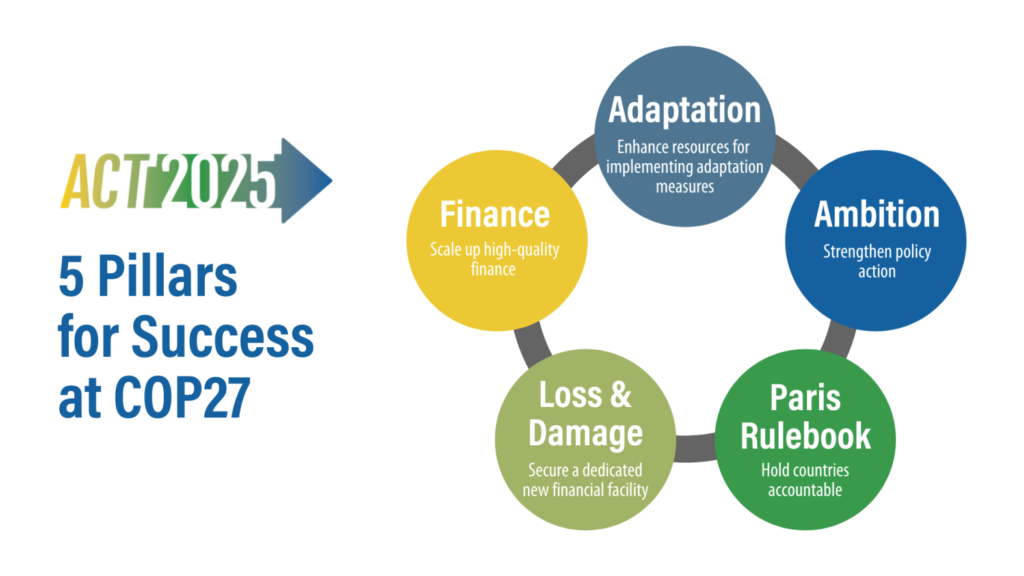
Leaders Should Make COP27 2022 Count
The IPCC notes that there is a limit to how much we can adapt before conditions become extreme and risks get “intolerable”. That is why experts are now talking about the importance of loss and damage financing as a critical part of the COP27 agenda.
The conference should become the stage where adaptation alongside mitigation and loss and damage financing get a central role – not in promises and commitments but in genuine implementation efforts.
“Adaptation saves lives. As climate impacts worsen – and they will – scaling up investments will be essential for survival… Delay means death.”
– UN Secretary-General Antonio Guterres
The world’s 46 least-developed countries produce just 1% of the world’s annual CO2 emissions. COP27 is taking place in a continent where climate change will push 40 million more people into extreme poverty by 2030. Scientists warn that vulnerable countries face an ever-evolving risk of disastrous weather extremes and follow-up food and health crises.
Developed countries have a historical and moral responsibility to act and protect the most vulnerable ones. The best moment for this was COP26. The second best would be COP27 – a conference where the call for help of the most vulnerable will echo louder and climate talks will hang by a thread.
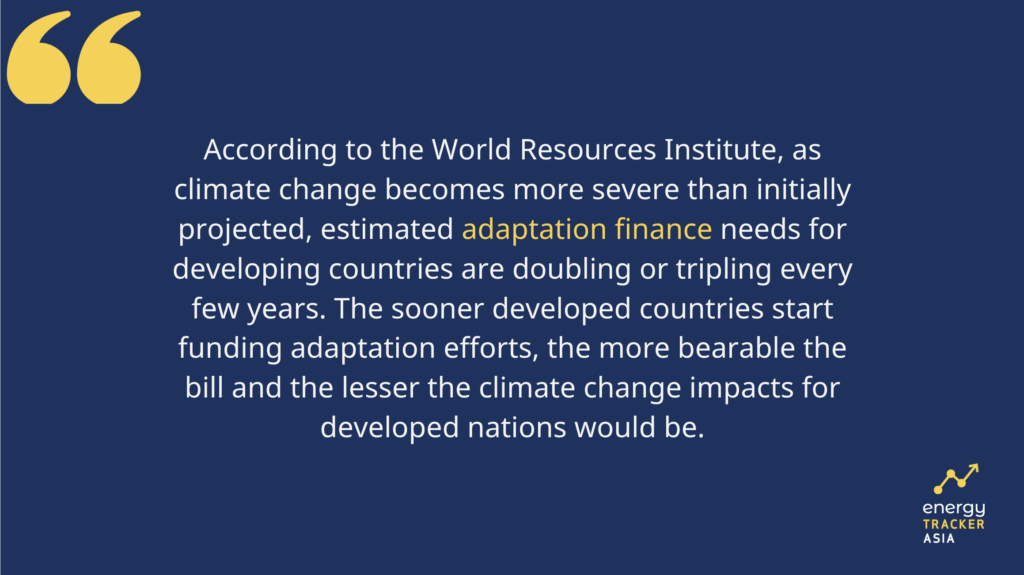
by Viktor Tachev
Viktor has years of experience in financial markets and energy finance, working as a marketing consultant and content creator for leading institutions, NGOs, and tech startups. He is a regular contributor to knowledge hubs and magazines, tackling the latest trends in sustainability and green energy.
Read more
